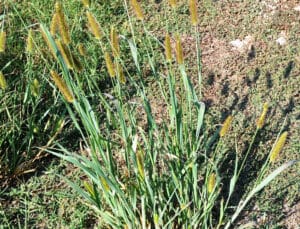Description
It is a biennial, which means the first year of growth ends with a low growing (basal) rosette of foliage. During the second year, the stem, branches and flowers are produced. Poison hemlock can reach up to 6 feet in height. The white flowers are produced throughout the summer from June into August. Individual flowers are small but clustered in an umbrella-like grouping, which makes them noticeable. The plants overall appearance resembles carrot and parsley.
As the plant puts on vertical growth, the stem develops purple spots, which are very distinctive. This plant is not only a landscape weed, and sometimes along the banks of water bodies and in meadows. It also has some health issues that should be kept in mind. All parts of poison hemlock are toxic to humans and other animals. The roots and seeds contain the highest concentration of alkaloids.
Poison hemlock has a long tap root (10 inches) and extensive fibrous roots. Hand removal is difficult because of the tough root system and the fact that the plant sap is, along with being toxic, a skin irritant. Even the use of weed trimmers needs to be conducted using precautions so that plant material doesn’t come into contact with the body. There are no pre-emergent herbicides to use against poison hemlock in ornamental settings. Post-emergents include: diquat, pelargonic acid, glyphosate (all are non-selective), and 2,4-D. The most effective approach is to treat the 1st year rosettes and not the larger, mature plant.





